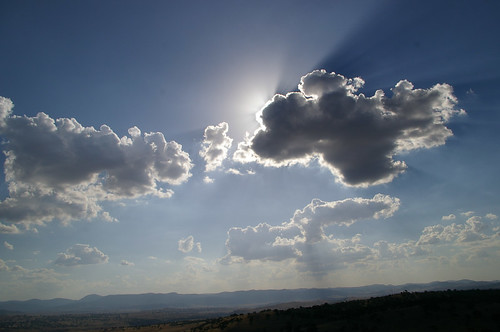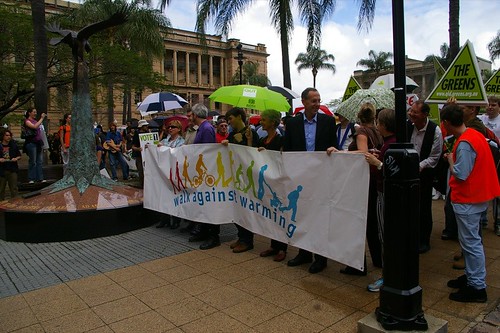Friday 29 June 2007
(URL for source to be found)
From Courier Mail, QLD, Australia
Smart State ambassador Ian Lowe warns against a nuclear future
THE Queensland ALP conference this weekend offers an important forum for the Beattie Government to steer the state away from the risks of a radioactive future and towards sustainable energy options.
Prime Minister John Howard is actively promoting nuclear power as a belated answer to global climate change. Recent media reports suggest a wider federal nuclear agenda for Queensland that includes uranium enrichment and nuclear power.
Against this background it is important Premier Peter Beattie continues to keep the door firmly shut on uranium mining and the nuclear industry.
Uranium mining in Queensland would be economically short-sighted and environmentally disastrous. If we want to be the Smart State, we must use solar energy and other forms of renewables.
We should move towards better efficiency, turning our energy more effectively into the services we want. There are many more jobs and dollars in becoming a world leader in clean energy.
We have known for more than 20 years that burning coal, oil and gas is changing the global climate. Moves by the coal industry to clean up its act and reduce its pollution are welcome, but rushed pledges of taxpayer funding to assist this are not. The same money would do much more to curb greenhouse pollution if it were allocated to efficiency improvements and clean energy.
Some claim nuclear energy could help to slow climate change, but this is not a sensible solution. Even the Switkowski report, put together by a hand-picked group of pro-nuclear technocrats, did not make a convincing case.
The summary was optimistic, but the fine print of the report shows it would take about 15 years to build one nuclear power station if we started today, and the cost of electricity would more than double.
Even the most fanciful crash program, dotting 25 nuclear power stations all over the landscape, would only slow the growth in greenhouse pollution by less than 20 per cent. The science shows we need to make serious cuts, 60-90 per cent by 2050, not allow more increases.
Would uranium exports be an economic bonanza? No. The most optimistic forecast of the possible export income is about a third of our earnings from cheese exports. Uranium accounts for only about 1 per cent of our mineral exports and there is little prospect of it becoming a big earner.
What would be the cost of mining and exporting uranium? Huge volumes of radioactive mine tailings, depleted and degraded water resources and an increased risk from nuclear weapons and waste. We are still living with the legacy of the mines at Mary Kathleen and across the Northern Territory border at Rum Jungle.
Uranium mining needs large volumes of water -- not easy to find in Queensland at the moment -- and uses vast amounts of fossil energy, actually worsening greenhouse pollution.
Finally, as the Ranger uranium report said 30 years ago, uranium exports inevitably produce high-level radioactive waste that will have to be managed for hundreds of thousands of years and equally inevitably increase the risk of nuclear weapons.
Even if we say we have the best safeguards in the world and only export to the most responsible leaders, they won't be in power forever and can't control what others will do with the fissile material we sell.
We should learn the lesson of Iran. The world is now getting nervous about its possible nuclear developments. Thirty years ago, we were being urged to export uranium to Iran, and the US was trying to sell its nuclear technology to the Shah. Had that deal gone ahead, Iran would now have all it needs to build nuclear weapons.
The report A Bright Future showed we could get 25 per cent of our power from a mix of renewables by 2020. We should use solar hot water universally. Going that way would create literally thousands of real, skilled and permanent jobs in regional Australia.
Rather than facing a future of leaking tailings dams and increased pressure for nuclear reactors and waste dumps, Queensland can lead Australia and the world in sustainable and clean energy solutions.
The smart sunshine state is a much better option than being a toxic quarry.
Before last year's state election, the Premier stood firmly against the nuclear lobby and promised that the state would not support the mining or processing of uranium.
Beattie also resisted the silly suggestion that we should allow others to inflict on Queensland other stages of uranium processing, such as enrichment or dumping waste. As a Smart State ambassador, I strongly urge the Premier to resist those who want to drag us back into the Dark Age of uranium mining.
Ian Lowe is emeritus professor of science, technology and society at Griffith University and president of the Australian Conservation Foundation
...
Read the article.
Read More......




